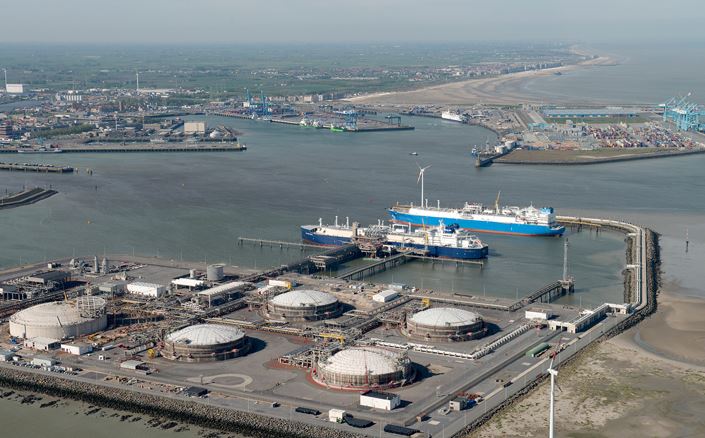Belgium’s Fluxys expects to start offering bio-LNG services at its Zeebrugge facility in the near future as it continues to work on expanding the terminal’s capacity.
The Zeebrugge terminal has already received bio-LNG certification under the ISCC framework in December last year.
In consultation with the market and federal energy regulator CREG, Fluxys is developing a regulated service package and the firm expects its customers will soon be able to book
capacity for bio-LNG at the terminal in the port of Zeebrugge.
“Bio-LNG is carbon-neutral and offers both hauliers and shipping companies the opportunity to move towards full decarbonization,” Fluxys said on Wednesday in its first-half report.
The Zeebrugge terminal currently consists of five tanks with a storage capacity of 566,000 cbm and a regasification capacity of about 6.6 mtpa.
Earlier this year, Fluxys took a final investment decision to almost double the regasification capacity at the LNG terminal following a successful open season.
Fluxys said in the January-June report that shipping traffic at the LNG terminal “remained at a similar level to that of the busy first half of 2020.”
The Zeebrugge facility hosted a lower number of large vessels that docked for transshipment, while “significantly more” small ships came to load LNG, Fluxys said.
Trucked LNG on the rise
In addition, the first half of 2021 saw a sharp increase in demand for LNG as a low-carbon fuel for ships and trucks, according to Fluxys.
The LNG terminal loaded a total of 3,200 LNG trailers, almost double the number loaded in the same period the previous year, the firm said.
Fluxys expects the number of loading operations to increase to around 6,000 this year.
Due to growing demand, Fluxys has earlier this year decided to build four additional truck loading bays at its Zeebrugge LNG terminal.
The new truck loading bays will go online in 2024.

